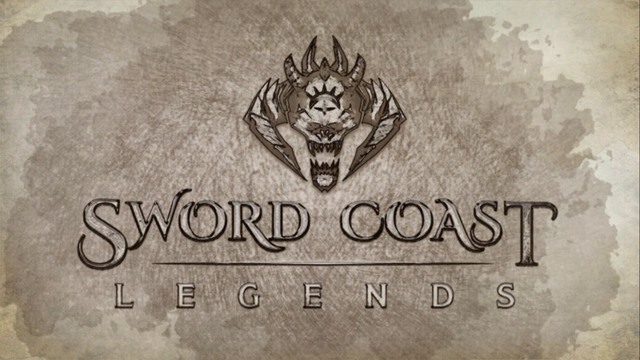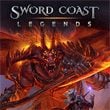Sword Coast Legends: Sword Coast Legends - system requirements

Sword Coast Legends is a classic cRPG developed by n-Space and Digital Extremes. The project has been supervised by Dan Tudge, who can boast his part in Dragon Age: Origins, and sound has been developed by Inon Zur. The game employs a top-down view and ensures tactical pause, during battles. Sword Coast Legends has been based on Unity Engine, which may not be the most popular around, when it comes to complicated and graphically advanced projects. Although the game looks decent, as for the genre, there are technical problems whose source lies in optimization, due to which what is happening on the screen is not properly reflected. The recommended requirements of GeForce GTX 750 1GB do not ensure high, or even medium-low image quality, if you hope for high FPS (45-60). In most cases, the problem is surface shading and resolution of shadows, although the ambient occlusion does not take up too much of your CPU. In the case of shadows, you can compromise them, which ensures decent-looking surroundings. If you have a graphic card lower than GTX 970/780 or AMD Radeon R9 290x/390, you do not reach 60 FPS with shadow rendering on. As mentioned above, this compromise is impossible to reach, because if you go a notch lower, when it comes to shadow resolution, they look as if they were composed of several blocks of pixels. This, however, ensure a performance leap and it may turn out to be the last resort for you. Technical analysis ignores the CPU on purpose, because even a weaker unit (e.g. Intel Core i3 or AMD FX 6300) ensure sufficient performance. However, what plays the first fiddle here is the GPU. For the purposes of this walkthrough, a system with Intel Core i5 4460, AMD Radeon R9 270x and 8GB RAM, has been used. In this configuration, the game had problems with keeping the steady 60 FPS. The FPS oscillated here around 30-40, where the component that with the most workload was the GPU. Fluent game of 60 FPS could be ensured by changing graphic settings to medium, minimum shadow settings and resolution of 1920x1080. In certain situations, performance dropped as low as to 15 FPS which, if subjected to scrutiny, has not been caused by any of the system's components. The Computer's consumption, in such cases, was as low as 15%, whereas that of the GPU barely reached 50%. Also, this has not been caused by problems of loading data from the SSD drive, nor by the lack of free RAM/ VRAM. Fluency drops occurred mainly during cutscenes rendered in real time. However, this was not too tedious and did not handicap the actual gameplay. What was annoying, though, is random game crashes and long locations loading screens. Long loading screens usually raise suspicion, because the game has been installed on an SSD drive and there is no way, in which this could be free space that could cause the problems.
To sum up: Sword Coast Legends is not the leader, when it comes to its technical aspects. Numerous FPS drops, crashes and long loading screens left a sour aftertaste that remains in memory forever.
Game modes
Singleplayer - Yes
Offline co-op (Split screen/Hot Seat) - No
Online co-op- Yes
Multiplayer - Yes
Our system
This walkthrough for Sword Coast Legends has been prepared, basing on the PC platform, and the following specifications:
CPU - Intel Core i5 4460
GPU - MSI Radeon R9 270x
RAM - 8GB
VRAM- 2GB
OS - Windows 7, 64bit
On the above specs, Sword Coast Legends did not work the way it was expected. Frequent drops in FPP effectively made reaching high comfort of playing impossible.
Sword Coast Legends - System requirements
Minimum requirements:
OS: Windows Vista 64bit
CPU: Intel Core 2 DUO E6700 or AMD Athlon 64 X2 6000+
RAM: 4GB RAM
GPU: NVidia GeForce 8800GT or AMD Radeon HD 4850
Required HDD space: 20 GB
Recommended requirements:
OS: Windows 7 64bit
CPU: Intel Core i5 2500k or AMD equivalent
RAM: 8GB RAM
GPU: Radeon R9 270X or NVidia GTX 760
Required HDD space: 20 GB
DirectX - DirectX 11.0
- Sword Coast Legends Game Guide
- Sword Coast Legends: Game Guide
- Sword Coast Legends: Hints on making a good start
- Sword Coast Legends: PC controls
- Sword Coast Legends: Combat
- Sword Coast Legends: Your party - what allies do I choose?
- Sword Coast Legends: Exploration
- Sword Coast Legends: Equipment
- Sword Coast Legends: Dialogues and reputation
- Sword Coast Legends: Crafting
- Sword Coast Legends: How to quickly gather money?
- Sword Coast Legends: Sword Coast Legends - system requirements
- Sword Coast Legends: Hints on making a good start
- Sword Coast Legends: Game Guide
You are not permitted to copy any image, text or info from this page. This site is not associated with and/or endorsed by the developers and the publishers. All logos and images are copyrighted by their respective owners.
Copyright © 2000 - 2025 Webedia Polska SA for gamepressure.com, unofficial game guides, walkthroughs, secrets, game tips, maps & strategies for top games.
